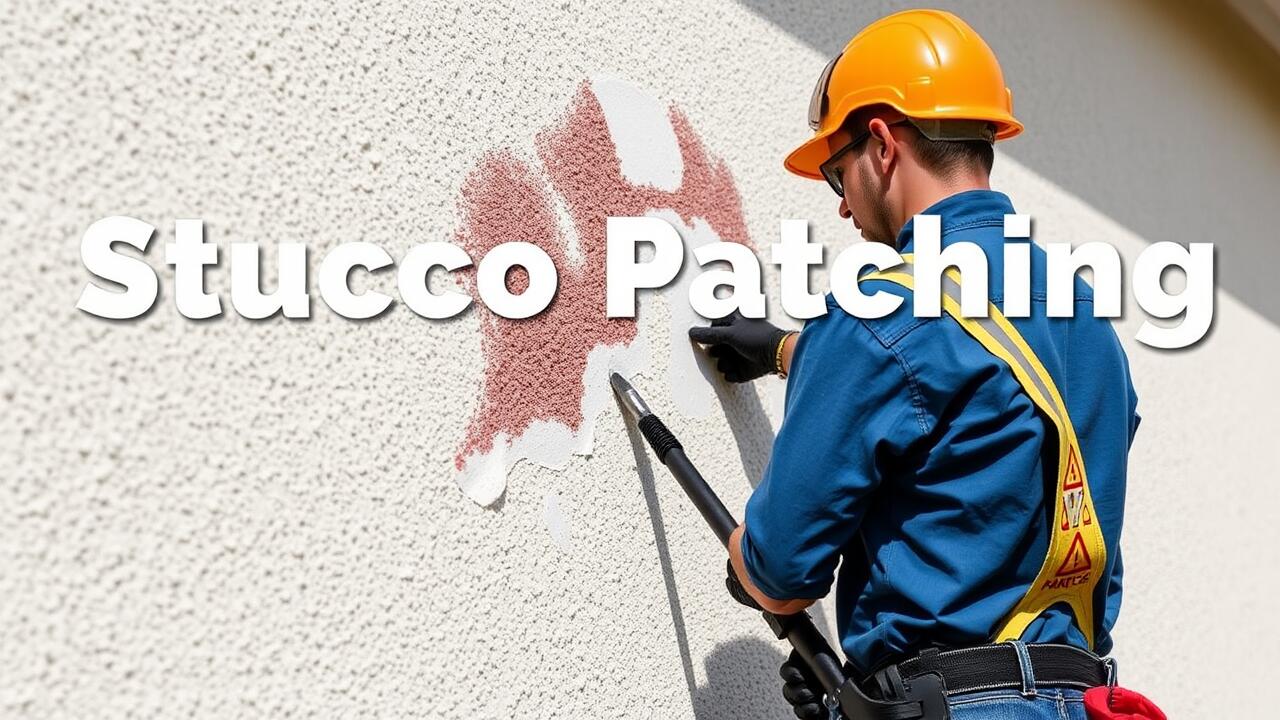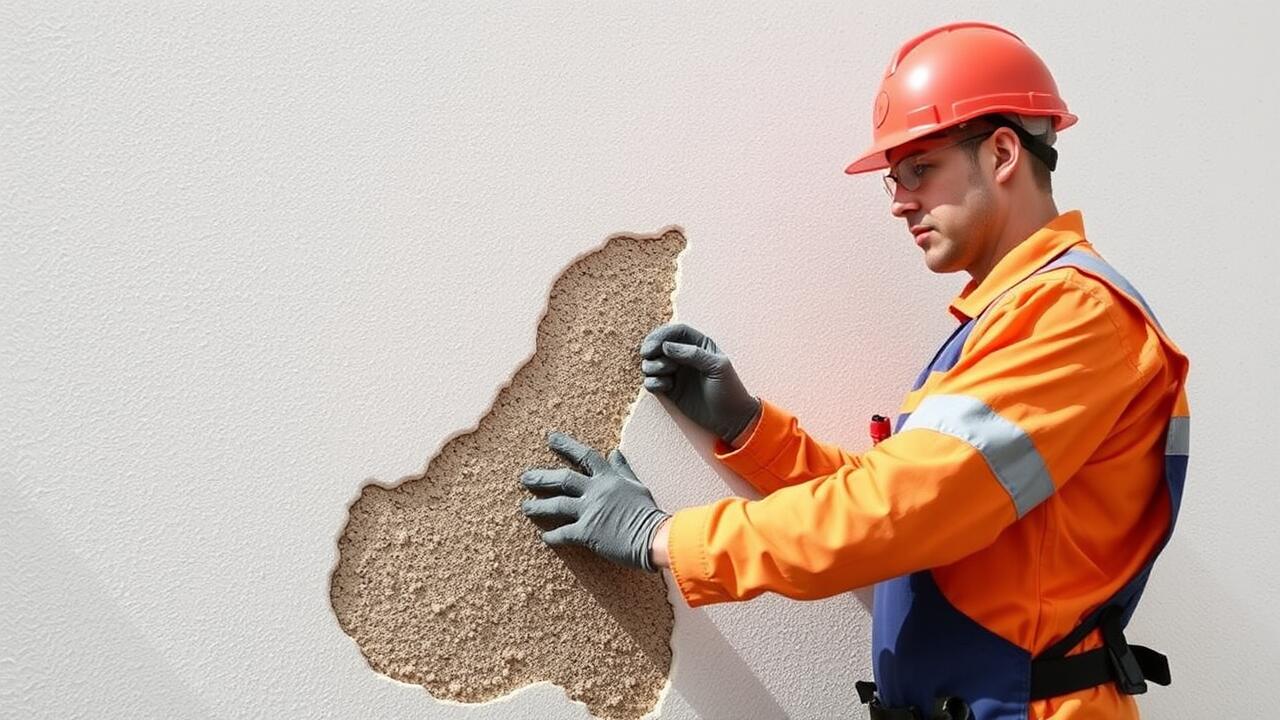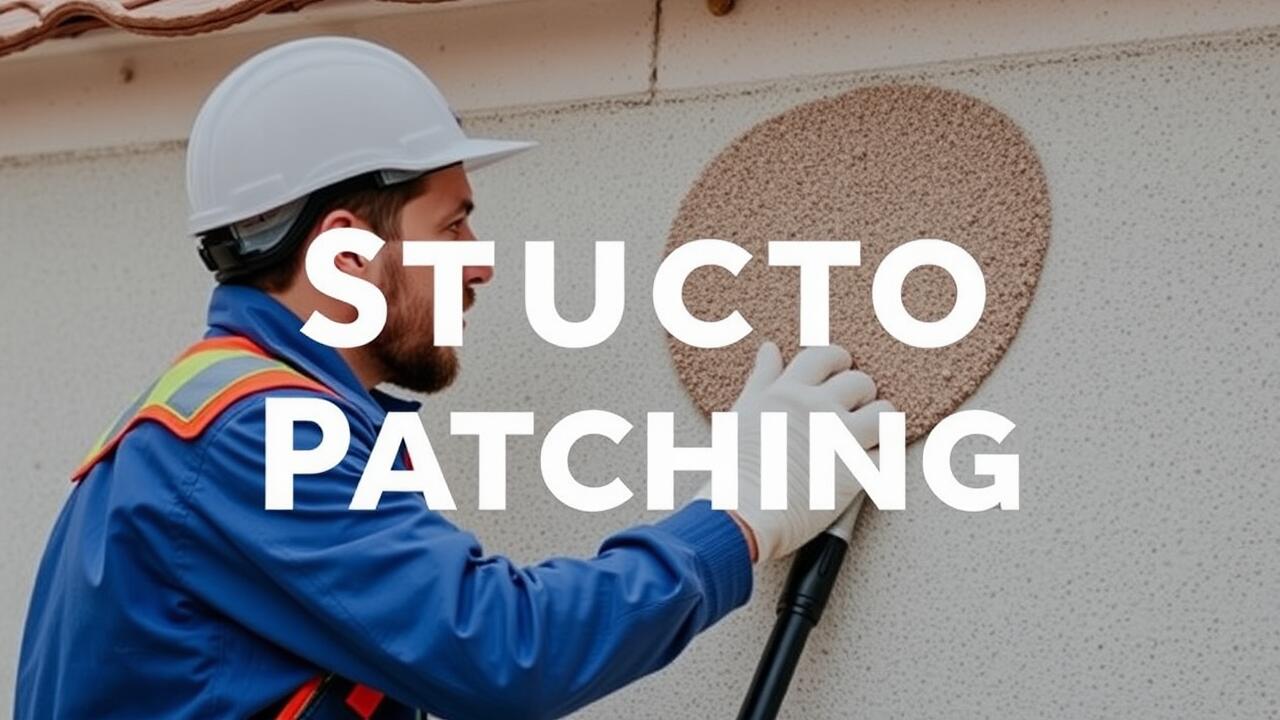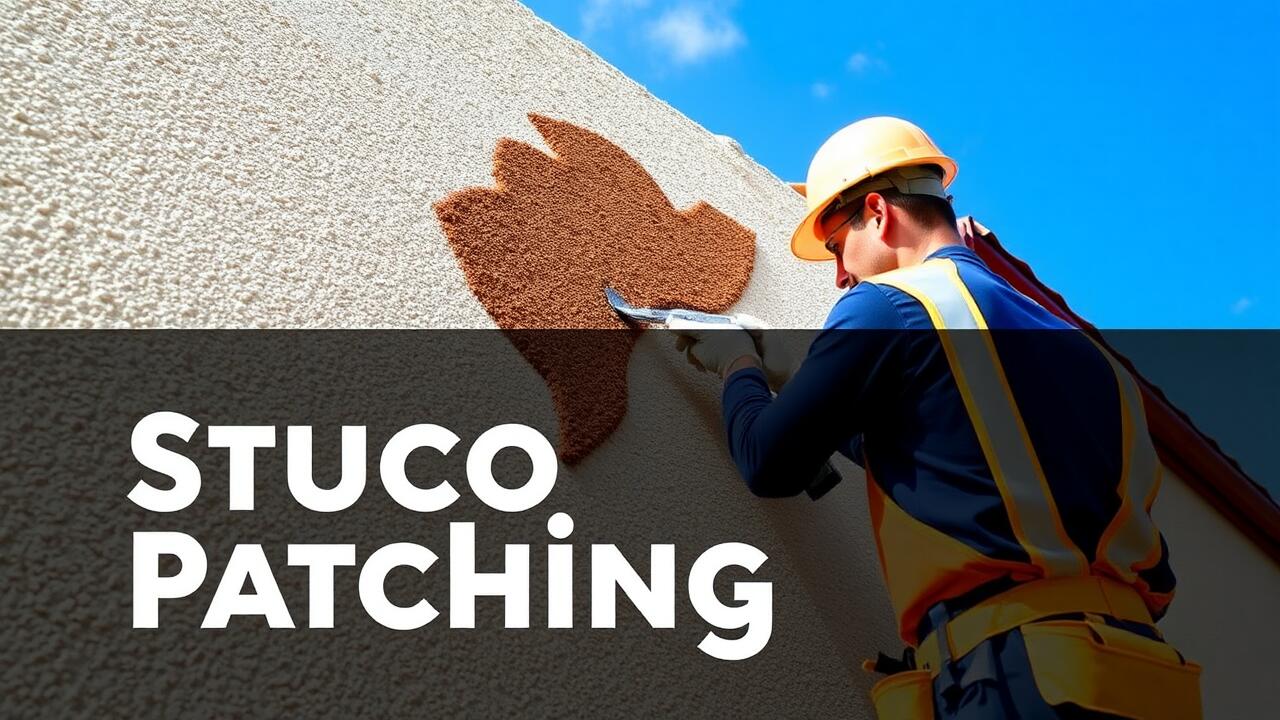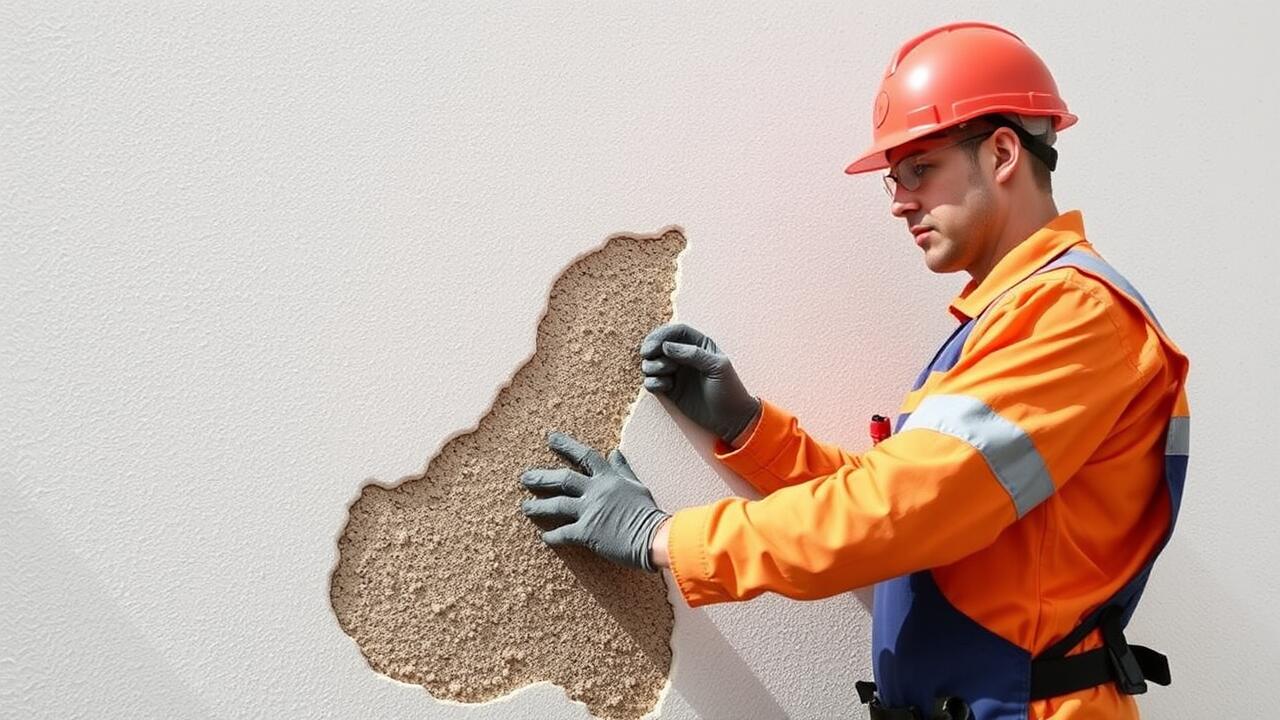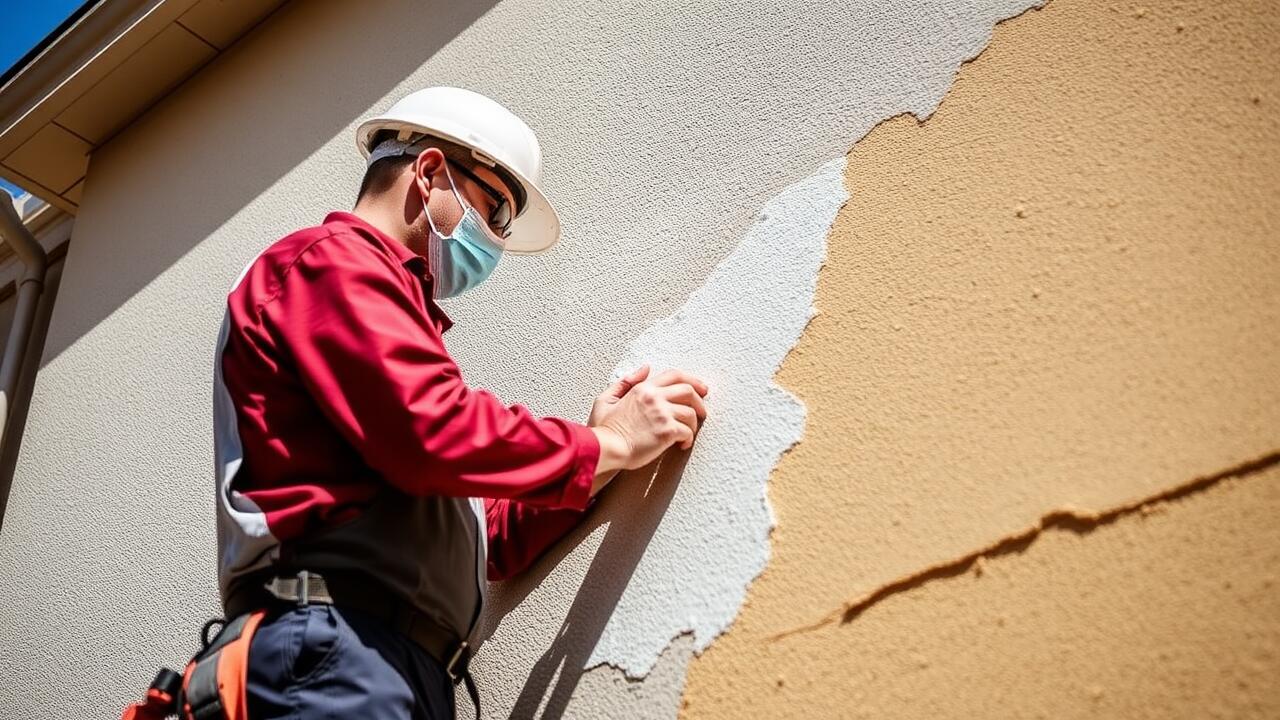
Applying the Patch
Begin by cleaning the cracked area thoroughly. Remove any loose debris, dust, or dirt to ensure the patch adheres properly. A wire brush or a putty knife works well for this purpose. Once the surface is clean, dampen it lightly with water to improve bonding. If you prefer professional help, consider searching for "Stucco Patching near me" to find experienced contractors in your area.
Next, prepare your patching compound according to the manufacturer's instructions. Apply a generous amount of the compound into the crack using a putty knife or trowel. Press firmly to fill the crack completely, ensuring there are no air pockets trapped inside. Feather the edges of the patch to blend it smoothly with the surrounding stucco. For larger cracks, multiple applications might be necessary to build up the patch to the desired level.
Step-by-Step Application Process
Begin by preparing the area around the crack. Clear away any loose debris or crumbling stucco with a wire brush. For deeper cracks, use a chisel to create a V-shaped groove, which will allow the patch to adhere better. Wipe the area with a damp sponge to remove dust and ensure proper bonding. If the crack is particularly large or wide, consider using a bonding agent to enhance adhesion. This preparation is crucial for achieving a durable and long-lasting repair.
Next, mix the stucco patch according to the manufacturer's instructions. The patch should have a consistency akin to peanut butter for easy application. Use a trowel to apply the mixture into the crack, pressing firmly to eliminate air pockets. Smooth the surface as much as possible while working, and feather the edges to blend with the surrounding stucco. If unsure about doing it yourself, searching for "Stucco Patching near me" can provide local professionals who can ensure a clean and efficient repair.
Smoothing the Surface
After applying the patch, the next step involves smoothing the surface to achieve a blend with the existing stucco. A quality finish not only enhances the appearance but also contributes to the durability of the repair. Utilizing a trowel, carefully feather out the edges of the patch while keeping the center slightly thicker. This technique prevents noticeable transitions between the new and old materials, promoting a more uniform look.
For those seeking professional assistance, looking up "Stucco Patching near me" can lead to skilled services that specialize in these refinements. Experienced professionals employ various tools, such as brushes or sponges, to replicate the texture of the surrounding stucco. By mimicking the original finish, the patched area can seamlessly integrate with the rest of the wall, making it difficult to detect any repairs.
Techniques for a Seamless Finish
Achieving a seamless finish when patching stucco requires careful attention to detail. Begin by using the same texture and pattern as the surrounding stucco to blend the patched area with the existing wall. This might involve replicating the style of the original finish, whether it's a dash, skip trowel, or smooth surface. A stencil or sponge can help create consistent patterns. For a flawless appearance, it's essential to take your time and work in small sections, ensuring the new patch doesn't stand out.
Once the texture is applied, consider lightly misting the patched area with water to aid in the drying process. After it dries, use sandpaper or a scraping tool to smooth any rough edges. This will help in preventing any visible transitions between the old and new stucco. If you're unsure about your skills or want a professional finish, searching for "Stucco Patching near me" can connect you with experts who can ensure a cohesive look for your home’s exterior.
Curing the Patch
Proper drying time is crucial for ensuring the longevity of your stucco repair. Once the patching material has been applied, it is essential to allow it to cure adequately. This process can take several days, depending on the weather conditions and the specific materials used. Avoid exposing the patched area to moisture during this time, as it may disrupt the curing process and lead to cracks forming.
To assist with drying, you may consider lightly misting the patched area with water two to three times daily. This helps maintain moisture levels and supports a thorough cure. Some homeowners may prefer to search for "Stucco Patching near me" for professional assistance. Engaging an expert ensures that the curing process is respected and enhances the overall stability and appearance of the repair.
Importance of Proper Drying Time
Proper drying time is crucial after applying the patch to ensure the integrity of the repair. If the patch is not allowed to cure completely, it may weaken and lead to further cracking or instability. Environmental factors such as humidity and temperature can influence the drying process, making it essential to monitor conditions closely. Many homeowners search for options like "Stucco Patching near me" to find local contractors who understand these nuances and can guarantee a lasting fix.
Inadequate drying can also impact the adhesion between layers, preventing the new patch from bonding effectively with the existing stucco. This can create vulnerabilities that compromise the appearance and longevity of the repair. By allowing adequate time for the patch to cure, you set the foundation for a more durable and visually appealing surface. Engaging professional help found through "Stucco Patching near me" can provide peace of mind, ensuring that the drying process is respected according to best practices.
FAQS
What materials do I need to patch cracked stucco?
To patch cracked stucco, you will need a stucco patching compound, a trowel, a putty knife, water for mixing, and a sponge or brush for smoothing the surface.
How long does it take for stucco patch to dry?
The drying time for stucco patch can vary depending on environmental conditions, but it typically takes 24 to 48 hours for the patch to cure properly.
Can I paint over patched stucco immediately?
It is recommended to wait until the patch has fully cured and dried before painting over it, which usually takes about a week.
What causes stucco to crack?
Stucco can crack due to various factors, including moisture intrusion, temperature fluctuations, improper installation, and settling of the building.
Is it necessary to use a bonding agent before applying a patch?
While not always necessary, using a bonding agent can help ensure better adhesion between the existing stucco and the new patch, especially for larger cracks.
